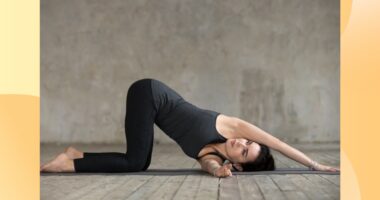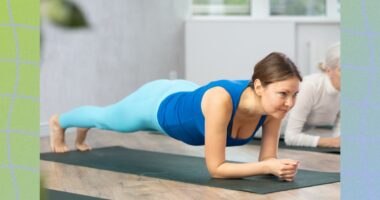
Adopt the synergy between Pranayama and meditation to enjoy tranquillity and peace in your yoga journey.
Embracing Pranayama for the first time can be stimulating and deliver tremendous health benefits, particularly when combined with meditation. Pranayama, or yogic breathing exercises, emphasises effectively utilising the breath to enhance physical and mental well-being. Incorporating Pranayama into your yoga practice can amplify your connection to your breath, relax the mind, and promote overall relaxation. Below are 11 essential tips to commence your pranayama journey by Raman Mittal, Co-founder of Idanim:
- Praise the current moment: The practice allows you to be fully present. Welcome each breath as an opportunity to hook with the present moment, discharging any connection to the past or anxiety of the future. By honouring the present moment during your Pranayama practice, you develop gratitude, happiness, and a deep sense of joy in the simplicity of each breath. Release all your expectations and immerse yourself entirely in the magnificence of the present moment during your Pranayama journey.
- Combine Pranayama with Meditation: In addition to Pranayama, meditation is a complementary technique that can significantly enhance your yoga experience. While Pranayama emphasizes breath control, meditation enables a calm and focused mind. Fusing meditation into your yoga practice can bolster your self-awareness, lower stress, and enhance overall mental well-being. Allocate some time for meditation post your Pranayama practice or as an individual practice altogether.
- Look for a renowned trainer: The practice of Pranayama includes precise breathing practices that demand guidance, particularly for beginners. Look for an experienced teacher who can deliver proper instructions and ensure that you practise Pranayama safely and effectively for its benefit. There are a lot of teachers available today, both physically & virtually.
- Do not hesitate to seek guidance and support: If you have any doubts or concerns during your Pranayama practice, don’t hesitate to seek advice from your trainer or fellow practitioners. Joining yoga gatherings in your local park or on digital platforms can furnish valuable support and sharing of experiences and inspire you on your Pranayama journey.
- Embrace patience and progress: Just like building your muscles in a gym takes time, Pranayama is a journey that extends gradually. Embrace the process and allow yourself to advance at your own pace. Avoid rushing or forcing yourself too hard; concentrate on the incremental progress you experience along the journey.
READ RELATED: Respiratory Syncytial Virus Infections: CDC Recommends Older Adults To Get RSV Vaccine This Fall
- Deepen your self-awareness: Pranayama improves your breath management and heightens your connection with your soul. Pay attention to the feelings, thoughts, and emotions that emerge during your practice Utilise Pranayama to nurture self-awareness and garner insights into your inner landscape.
- Respect your body’s limitations: Listening to your body and admiring its limitations is pivotal, like any physical activity. Begin slowly and gradually as you expand the duration and intensity of your Pranayama practice. If you sense any distress or dizziness, pause and resume normal breathing.
- Consistency is vital: To unlock the true potential of Pranayama, maintaining consistency is elementary. Include Pranayama into your daily routine, devoting a specific time for your practice. Remember that even a few minutes of daily exercise can make a substantial difference.
- Commence with the basics: Start your Pranayama journey with easy breathing exercises like diaphragmatic or alternate nostril breathing. These basic approaches assist in fostering awareness of the breath and establish a substantial foundation for more advanced practices.
- Look for a peaceful space for practice: Find a calm and relaxing space where you can practise Pranayama without distractions. Contain any external disruptions and develop a serene ambience with soothing lighting, relaxing music, and fragrance to enhance relaxation.
- Frame clear objectives: Before beginning your Pranayama practice, set clear preferences for your goal. Be it relieving stress, enhancing focus, or fostering emotional balance, possessing a clear purpose will navigate your course.
Conclusion
Find a comfortable seated position, close your eyes and bring your attention to the moment by concentrating on your breath or repeating a mantra. Adopt the synergy between Pranayama and meditation to enjoy tranquillity and peace in your yoga journey. It is important to remember that Pranayama and meditation demand that you be kind to yourself and enjoy the transformative advantages these approaches can convey to your body, mind, and spirit.
Total Wellness is now just a click away.
Follow us on
window.addEventListener(‘load’, (event) => {
// $(document).ready(function(){
$(‘#commentbtn’).on(“click”,function(){
(function(d, s, id) { var js, fjs = d.getElementsByTagName(s)[0]; if (d.getElementById(id)) return; js = d.createElement(s); js.id = id; js.src = “//connect.facebook.net/en_US/sdk.js#xfbml=1&version=v2.3”; fjs.parentNode.insertBefore(js, fjs);}(document, ‘script’, ‘facebook-jssdk’));
$(“.cmntbox”).toggle();
});
// });
});








